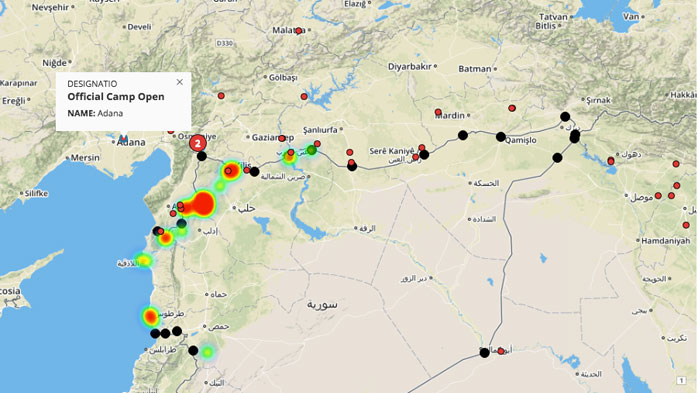Since the Syrian crisis began in 2011, millions of displaced refugees have flooded the Turkish border seeking a safe haven from civil unrest. With the rise of ISIS, the UNHCR estimates the number of asylum seekers to reach 1.9 million, with half of Syrian refugees being children. Turkey has become the world’s largest refugee hosting country, spending more than $6 billion on direct assistance to refugees and receiving only a small margin of aid from the international community.
The Syrian refugee crisis has triggered the world’s largest humanitarian crisis since World War II and demonstrates the limitations of international asylum and protection systems. A collaborative effort from states, international organizations and NGOs at a global level is required to find a truly effective and long-term solution to aid these refugees. As tensions in Turkey grow between Turkish citizens and refugees and violence continues to push Syrians out of their homes, a collective response is more necessary than ever before.
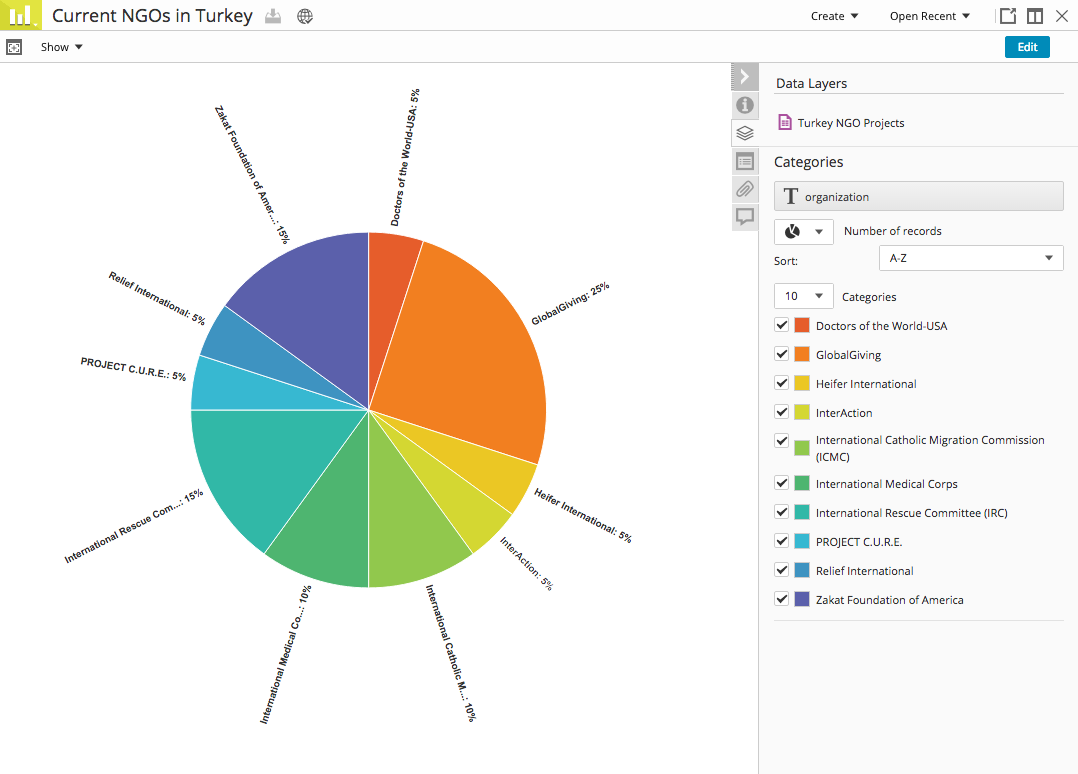 With Savanna, our all-source analysis software, we investigated the Syrian refugees’ impact on Turkey’s ecology and infrastructure. We also analyzed current international aid efforts to determine what’s needed to fill the gap.
With Savanna, our all-source analysis software, we investigated the Syrian refugees’ impact on Turkey’s ecology and infrastructure. We also analyzed current international aid efforts to determine what’s needed to fill the gap.
Savanna’s provides our team of analysts with a collaborative workspace in which to individually and collectively analyze specific questions and concerns, while capturing supporting evidence in context and creating a lineage of the progression of ideas and understandings.
To begin, we framed the problem with Crumbnet. Crumbnet acts as a central, collective workspace where analysis teams can collaboratively add new information and evidence as situations evolve. In the Crumbnet, we outlined the top 5 analysis questions about the situation, assigning tasks to each team member with nodes for analysts to summarize findings and attach evidence.
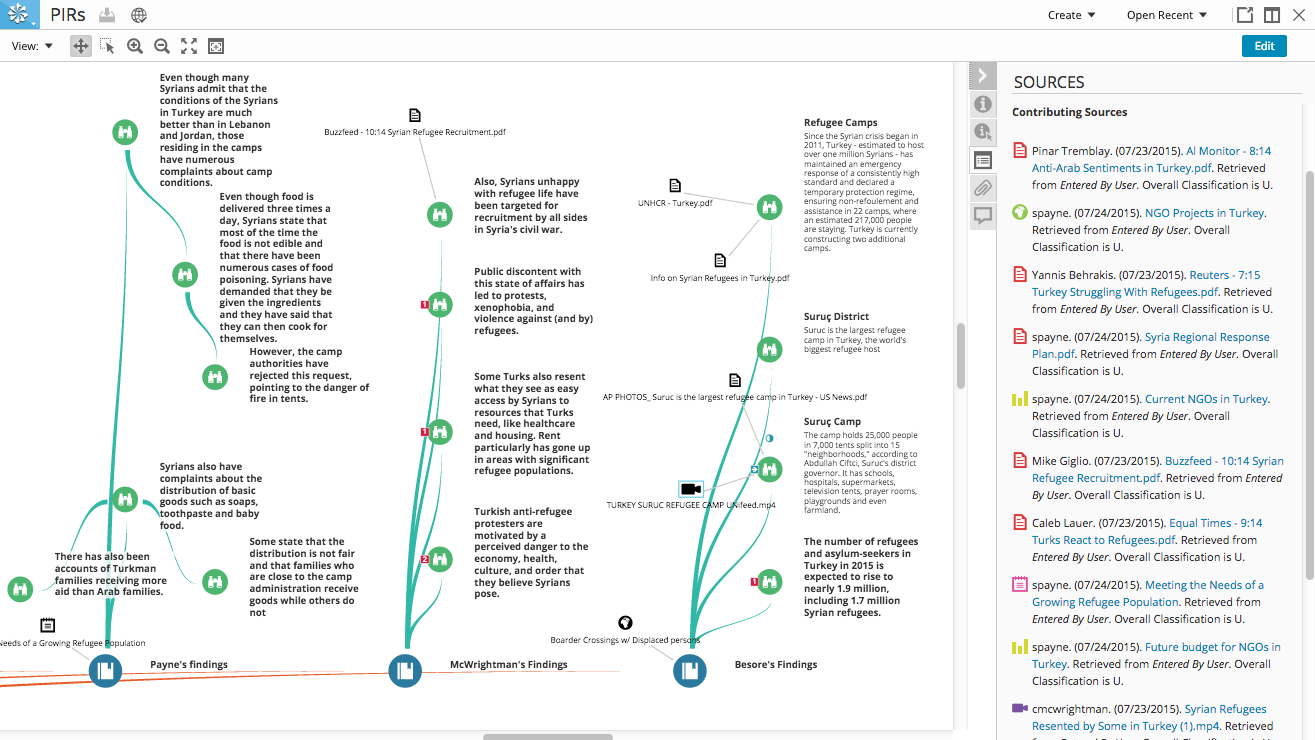 The Syrian refugee crisis has many geospatial aspects, with over a dozen NGOs working along the Syrian border and an increasing amount of incidents along the Turkish border. An analyst creates a Map to geospatially visualize the impact of refugees along the Turkish border, dragging and dropping multiple geospatial data files onto the Map to see how refugee border crossings connect to refugee and IDP sites.
The Syrian refugee crisis has many geospatial aspects, with over a dozen NGOs working along the Syrian border and an increasing amount of incidents along the Turkish border. An analyst creates a Map to geospatially visualize the impact of refugees along the Turkish border, dragging and dropping multiple geospatial data files onto the Map to see how refugee border crossings connect to refugee and IDP sites.
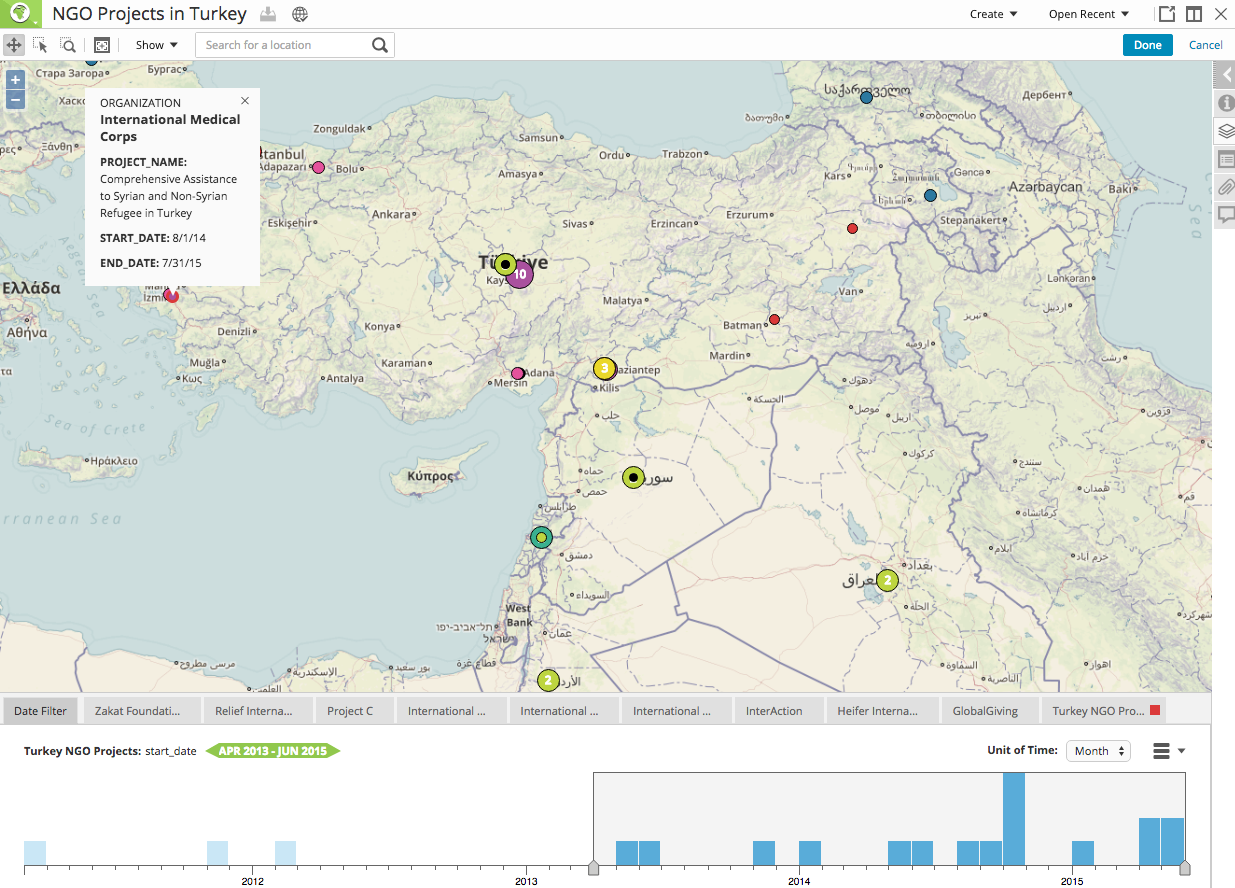
Savanna’s dynamic Occurrence documents helped us collect existing information on non-governmental organizations, or NGOs, involved in aid relief. Organization Occurrences were created for each NGO operating aid in Turkey, with events created to document and connect major aid projects dates and statistics. Using this information, we opened a Map to visualize the NGO Occurrences alongside known NGO projects, temporally filtering the data by date to see the pattern on NGO projects based on location. This gave us a clear view of where aid is lacking along the Turkish border.
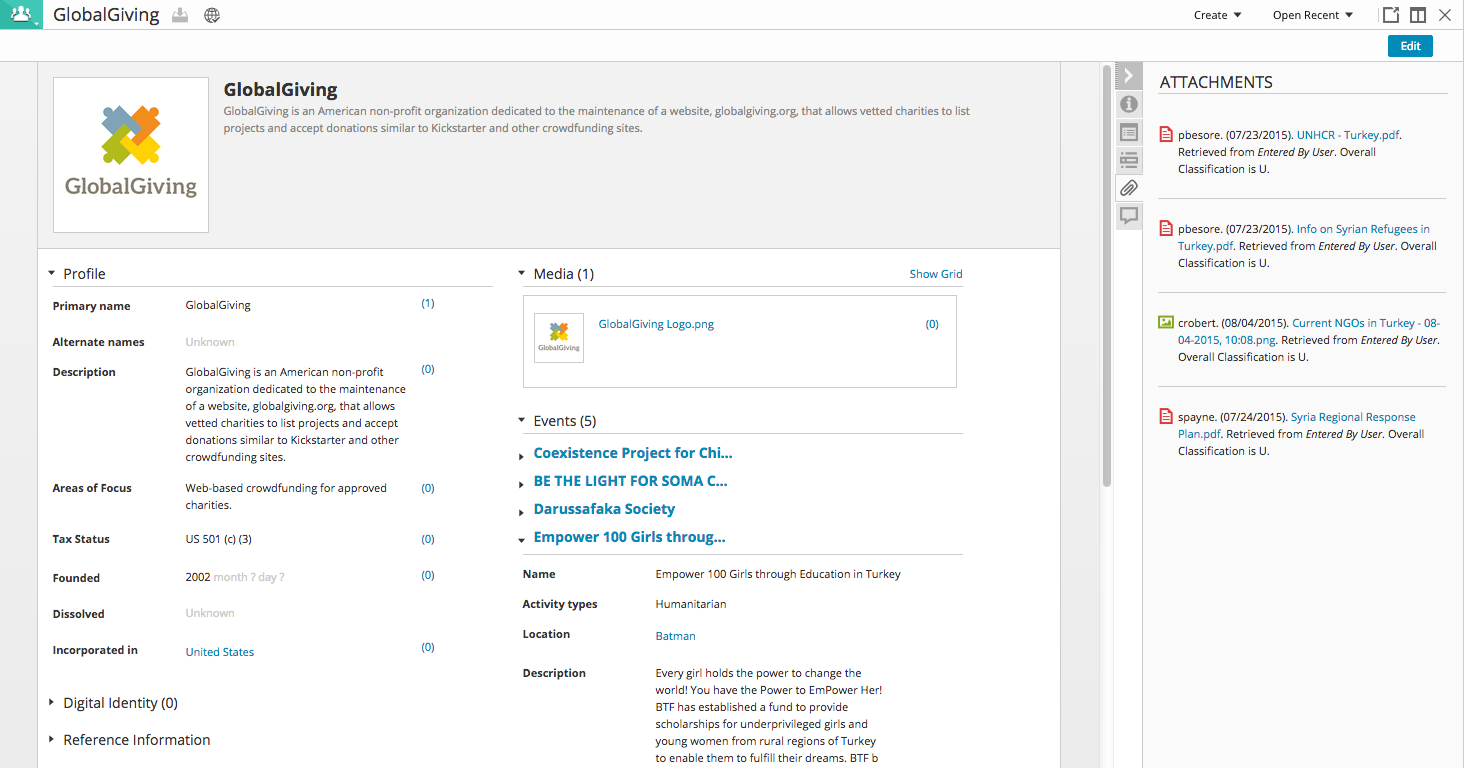
With Savanna’s Search tool, we collected social media mentions and news reports of the movement impact of refugees on Turkey’s local communities. As we built the analysis, we continued to revisit the Crumbnet outlining the analysis objectives. Each analyst on the team summarized topics and facts discovered during the workflow, attaching the Maps and Occurrences created, as well as supporting news articles and social media. We barely scratched the surface of this humanitarian crisis, but with Savanna’s analysis platform, we were able to connect various data, both structured and unstructured, to model the growing socio-cultural implications of large numbers of refugees in Turkey.
Watch the demo below to see this analysis in action.
Curious? Let's set up a free trial.
Try Savanna